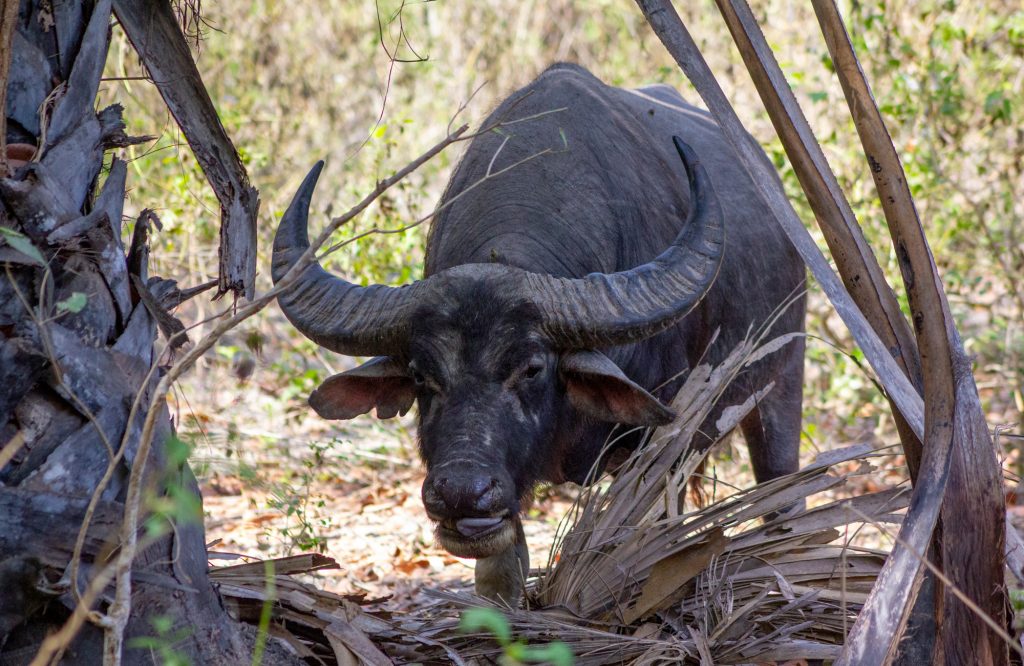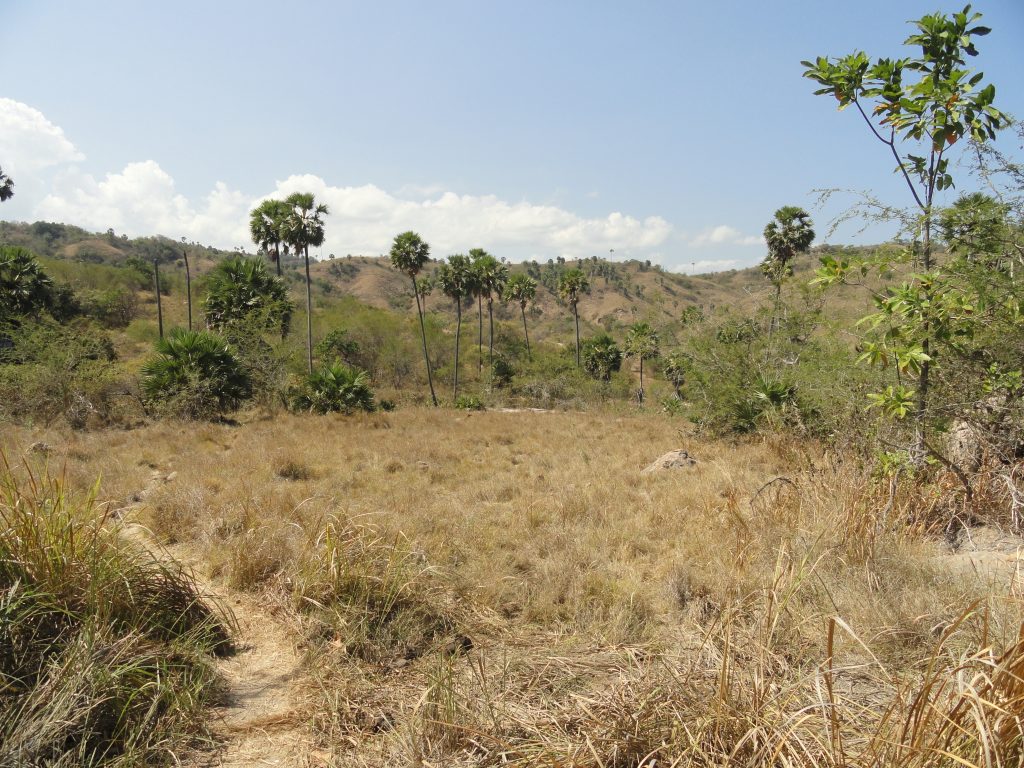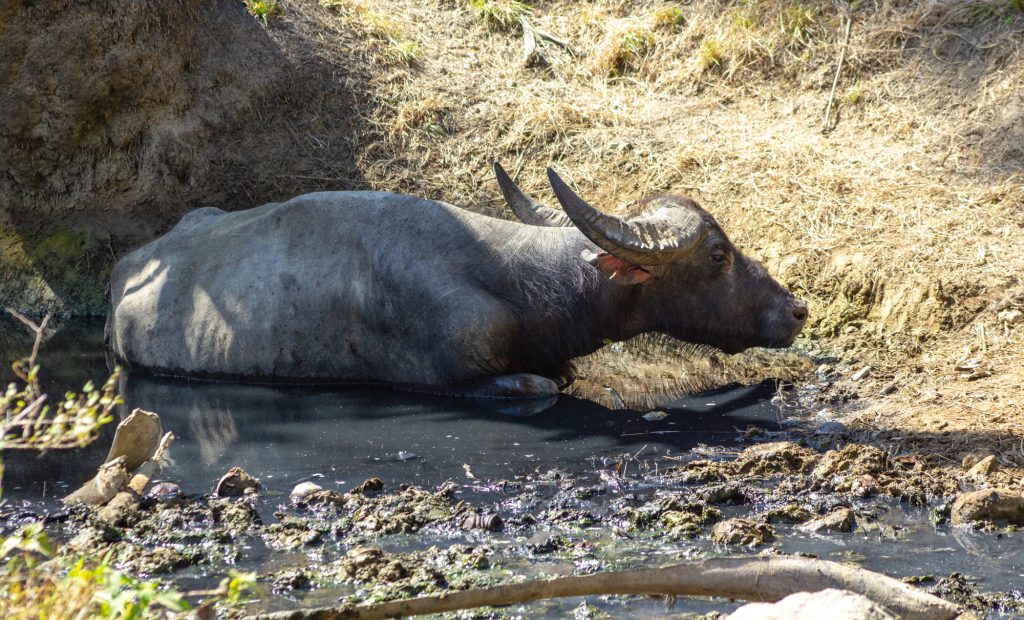
A water buffalo moves slowly through a shaded woodland on Rinca Island. It’s the dry season, so the grass rustles with each footfall, and it’s oppressively hot. Without warning, a massive reptile—the size of a full-grown man—bursts through the shrubbery. It’s a Komodo dragon, and before the buffalo can react, it lands a deep, gouging bite on the mammal’s thigh.
The buffalo shakes off its attacker and escapes, but collapses 36 hours later, its body ravaged by septicemic bacteria introduced by its saurian assailant. The dragon, with disciplined patience, claims its prize within the hour.
The use of weaponized bacteria seems like an incredible and unique hunting strategy, and it would be—except, the scenario above isn’t at all how Komodo dragon bites work.
Komodo dragons have gained a well-deserved reputation as effective and brutal predators, terrorizing everything from monkeys to livestock on their small, Indonesian island homes. Part of that reputation includes a mouth allegedly teeming with pathogenic bacteria, with which the dragons infect large hard-to-conquer prey via a kind of “nibble of death.”
In reality, dragon mouths are completely free of this microscopic bite-booster, and research in recent years has revealed what these giant lizards may use in bacteria’s place: venom.

The Making of a Myth
To be fair, the idea that Komodo dragons wield murderously filthy chompers isn’t something rooted in an urban legend—up until relatively recently, it was the only explanation really championed by scientists.
The hypothesis got its start in the 70s and 80s, around the time herpetologist Walter Auffenberg spent an entire year living on the island of Komodo and studying how the dragons lived and hunted. Before then, the dragons were renowned for their status as the largest lizards on the planet and apparent danger to humans and livestock, but little was known about their biology or behavior.
Auffenberg recounted that he’d see dragons attack water buffalo that—as big as the lizards were—far outweighed the reptiles. Often, the dragons would fail to kill their target, simply biting and wounding the animal before it escaped. But the buffalo didn’t last long. Within days, they’d succumb to a nasty, systemic infection, becoming easily vanquished sustenance for the island’s dragons. When Auffenberg proposed that the illness may have come from the dragon’s bite, the concept of a weaponized infection as a unique means of killing prey far larger and more powerful than oneself became too tempting not to entertain as a real possibility.

The Venom Debate
The bacterial bite idea persisted for decades, and was bolstered by research that identified bacteria in Komodo dragon mouths thought to be “potentially pathogenic.” But in 2013, University of Queensland researcher Bryan Fry and his colleagues put the idea to rest.
Fry and his team analyzed bacterial samples from dragon mouths and failed to find any species of mouth flora that differed substantially from those found in other carnivores. They also determined that the bacteria identified in previous work were mostly common, harmless species, and that the single, supposedly septicemic variety wasn’t showing up in dragon mouths. In the end, the bacteria in dragon mouths is pretty close to what’s living in and on recent meals, or in the reptiles’ environment.
Part of the bacterial bite myth is that Komodo dragons grow their toxic warriors by having chunks of rotting flesh from previous meals in and around their mouths, drenched in copious saliva. In reality, dragons are initially messy eaters, but promptly clean themselves well after feasting. With meticulous oral hygiene, the whole “toxic corpse mouth” thing is hard to imagine.

But just because the dragons’ fangs aren’t slicked with disease, doesn’t mean they aren’t especially deadly in another way.
Fry and his team had noted something unusual about the dragons in the years preceding the mouth flora discovery. For one, in 2006, the researchers published findings that suggested that based on shared, buried venom genes between Komodo dragons and their close relatives, the common ancestor of monitor lizards (like dragons) and snakes would have been venomous in life. Three years later, the team argued that they’d found physical evidence of venom glands in Komodo dragon jaws, and that the glands produced proteins that likely caused massive plunges in blood pressure in bitten victims.
It’s thought that this venom may work in concert with the dragons’ sharp, recurved teeth, which can shred flesh and arteries with unmatched ease. The combination of extreme physical trauma and the effects of the venom may cause catastrophic and rapid blood loss— the dragon’s bite may have evolved to bleed prey out quickly, not induce a long, drawn-out sickness.
What’s Really Eating Water Buffalo?
But even this explanation isn’t behind the septic buffalos meeting their maker. For this phenomenon, bacteria certainly plays a central role, just not in the way scientists originally thought.

Komodo dragons didn’t actually evolve to hunt and eat water buffalo, and neither species is really purely an island native. Dragons themselves are now considered a relict population of a formerly wide range of giant lizards that once lived throughout Australasia, now limited to a few small, dusty islands. Water buffalo were introduced to the tiny islands of Komodo and Rinca a few thousand years ago by humans.
Dragons almost certainly evolved to eat much more manageably-sized prey, things more the size of a dog or a petite pig; animals, perhaps, much easier to overpower and bleed out in a short timeframe.

Modern Komodo dragons make do, lunging at buffalo when they can’t nab a young deer or a monkey. At most, the buffalo suffer deep lacerations, but no mortal wounding. They then go off to sulk in a mud wallow. On mainland Asia, water buffalo have access to plentiful marshes and bogs, but in the Land of Dragons, they’re limited to muddy pits that are often contaminated with their own feces.
This is, of course, an environment ripe for infection when gaping wounds are involved.

It’s possible that this is how the fabled infections actually occurred, allowing dragons to finally have their fill days after a single, ripping attack. This would mean that the dragons are just lucky water buffalo engage in such inadvertently self-destructive behavior when injured. The confusion about the dragons’ bite may be the result of an odd ecological situation the dragons and the large mammals of the island find themselves locked in.